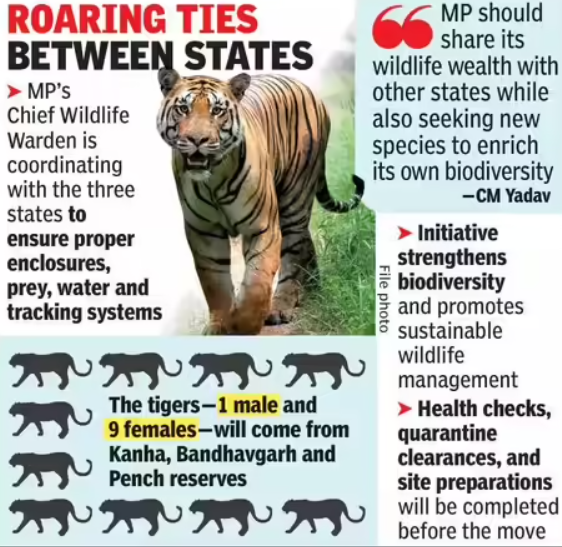National Current Affairs Switch to Hindi
UN Troop Contributing Countries (UNTCC) Chiefs Conclave 2025
Why in News?
The United Nations Troop Contributing Countries (UNTCC) Chiefs Conclave 2025, hosted by the Indian Army from 14th to 16th October 2025, brought together senior military leaders from 32 nations that play a key role in global UN peacekeeping operations.
Key Points
- About: The conclave is attended by senior military officials from 32 nations, including Algeria, Armenia, Australia, Bangladesh, Brazil, Egypt, Ethiopia, France, Ghana, India, Italy, Kenya, Malaysia, Nepal, Nigeria, Poland, Rwanda, Sri Lanka, Tanzania, Thailand, Uganda, Uruguay, and Vietnam.
- The event also features defence exhibitions aimed at building shared capacities for peacekeeping missions.
- Objectives: The UNTCC serves as a vital forum to address operational challenges, evolving threats, interoperability, inclusivity in decision-making, and the role of technology and training in strengthening UN peacekeeping.
- India, one of the largest contributors to UN peacekeeping, has convened this high-level forum to discuss best practices, share insights, and build mutual understanding for future peacekeeping.
- Technology Demonstration: The chiefs witnessed a demonstration of integrated, new-age military technology by the Indian Army, showcasing various indigenous military equipment.
- 4C Formula for UN Peacekeeping: Defence Minister Rajnath Singh proposed a guiding principle of enhanced Consultation, Cooperation, Coordination, and Capacity Building (4C) to address emerging challenges in peacekeeping.
- He noted that the Centre for UN Peacekeeping in New Delhi has trained participants from over 90 countries, contributing significantly to the development of interoperability among peacekeepers.
United Nations Peacekeeping (UNPK)
- The first UNPK mission, the United Nations Truce Supervision Organisation (UNTSO), was established in May 1948 to monitor the Armistice Agreement between Israel and its Arab neighbours with a small team of military observers.
- They are deployed by the UN Security Council to support ceasefires and peace agreements and are called Blue Helmets due to the light blue colour symbolising peace on the UN flag.
- Currently, over 61,000 military and police peacekeepers from 119 countries and more than 7,000 civilian personnel serve in 11 UN Peacekeeping Missions.
Madhya Pradesh Switch to Hindi
MP to Relocate Tigers to Neighbouring States
Why in News?
Madhya Pradesh, the ‘Tiger State of India’ with the country’s largest tiger population, will relocate one tiger and nine tigresses to Odisha, Rajasthan, and Chhattisgarh under an inter-state conservation plan, following an earlier unsuccessful attempt to send tigers to Odisha.
Key Points
- About: The translocation is part of an inter-state wildlife cooperation initiative aimed at enhancing tiger populations in reserves with low density and strengthening India’s overall conservation network.
- Madhya Pradesh Chief Wildlife Warden has written to his counterparts in the three states, directing them to make necessary preparations for tiger relocation.
- Preparatory Measures: The states have been asked to submit details on:
- Availability of enclosures and prey base
- Installation of radio collars for tracking
- Status of water resources
- Human interference around the release sites
- Approval: The initiative follows the approval of Chief Minister Mohan Yadav during the 30th meeting of the State Wildlife Board.
- Source Reserves: Tigers for relocation will be translocated from Kanha, Bandhavgarh, and Pench Tiger Reserves, all of which have stable and growing tiger populations.
- Implementation: The translocation will begin once Health checks are completed, Quarantine protocols are cleared, and Final logistical arrangements are in place across all three recipient states.
- Significance: The initiative is significant as it promotes balanced tiger distribution to ease population pressure in dense habitats, enhances genetic diversity by facilitating gene flow, and helps restore ecological balance in underpopulated reserves.
Rajasthan Switch to Hindi
Sanganeri-Printed Blanket Covers
Why in News?
In an effort to enhance passenger comfort and promote traditional Indian crafts, Union Railway Minister Ashwini Vaishnaw launched a pilot project introducing Sanganeri-printed covers for train blankets.
- Alongside the blanket project, the Minister also inaugurated upgraded platforms and passenger amenities at 65 small and medium-sized stations under the North Western Railway zone, with a total investment of ₹100 crore.
Key Points
- About: The pilot initiative was unveiled at Jaipur’s Khatipura Railway Station and marks a step toward improving the overall passenger experience on Indian Railways.
- Implementation: The project will initially be implemented in AC coaches of the Jaipur-Asrava Superfast Express (12981) on a trial basis.
- Objective: The initiative aims to improve hygiene and passenger satisfaction by providing blankets with washable printed covers, similar to home-use models.
- Design Considerations: The Sanganeri-printed covers have been designed for durability, ease of washing, and long-lasting prints.
- Cultural Integration: Beyond Sanganeri prints, the Railways plans to showcase traditional textile designs from various states, thereby promoting India’s cultural diversity through rail services.
Sanganeri-Print
- Origin and Tradition: Sanganeri is a small village in Jaipur, Rajasthan renowned for its centuries-old tradition of hand block printing, passed down through generations.
- Design Characteristics: The craft is distinguished by its intricate floral motifs and delicate detailing, reflecting a deep artistic heritage.
- Inspiration and Aesthetics: Sanganeri prints draw inspiration from nature and Mughal architecture, resulting in elegant, harmonious, and richly patterned designs made with natural dyes.
Uttarakhand Switch to Hindi
India’s 1st DNA-Based Elephant Census
Why in News?
India’s first-ever nationwide DNA-based census of wild elephants has revealed a 25% decline in the country’s elephant population over the past eight years, highlighting growing threats from habitat loss, fragmentation, and human-elephant conflict.
Key Points
- About: The report titled ‘Status of Elephants in India: DNA-based Synchronous All-India Population Estimation of Elephants (SAIEE 2021–25)’ estimated 22,446 elephants, compared to 29,964 in 2017.
- The exercise was conducted by the Wildlife Institute of India (WII) under Project Elephant (1992).
- The study marks a shift from visual and dung-based counts to a DNA mark–recapture technique, enabling more scientifically accurate population estimation.
- The DNA-based method, similar to that used in tiger estimation, identifies individual elephants through unique genetic markers, overcoming the limitation of elephants’ lack of distinctive physical features.
- Data Collection:
- Conducted across 188,030 trails covering 6.66 lakh km.
- Over 3.19 lakh dung plots examined and 21,056 samples collected.
- DNA profiles generated for 4,065 individual elephants.
- Estimation Technique: Used Spatially Explicit Capture–Recapture (SECR) models integrating genetic and habitat data for accurate population estimation.
- Regional Distribution:
- Karnataka – 6,013
- Assam – 4,159
- Tamil Nadu – 3,136
- Kerala – 2,785
- Uttarakhand – 1,792
- Odisha – 912
- Regional Trends:
- Western Ghats: 11,934 elephants (down from 14,587 in 2017)
- Northeastern Hills & Brahmaputra Plains: 6,559 (down from 10,139)
- Central Indian Highlands & Eastern Ghats: 1,891 (down from 3,128)
- Shivalik–Gangetic Plains: 2,062 (nearly unchanged from 2,085)
- Key Insights:
- Habitat Fragmentation: Expansion of coffee and tea plantations, farmland fencing, and infrastructure projects are fragmenting elephant habitats, especially in the Western Ghats.
- Human–Elephant Conflict: Highest in Assam (Sonitpur, Golaghat) and central India (Jharkhand, Chhattisgarh, Odisha).
- Central India, with less than 10% of elephants, accounts for 45% of human deaths caused by elephants.
- Positive Development: Poaching incidents have declined, but habitat degradation remains the major threat.
Maharashtra Switch to Hindi
Senior Naxalite Bhupathi Surrenders
Why in News?
In a remarkable move towards rehabilitation, Lloyds Metals and Energy Limited (LMEL), a company based in Gadchiroli, has extended an offer to employ Bhupathi as its brand ambassador and to provide jobs to the 60 surrendered Maoists.
Key Points
- About: Bhupathi, who carried a bounty of Rs 6 crore, along with 60 cadres, surrendered with 54 weapons, including seven AK-47s and nine INSAS rifles.
- Bhupathi, one of the most influential strategists in the Maoist organization, had supervised platoon operations along the Maharashtra-Chhattisgarh border.
- Chief Minister Devendra Fadnavis urged the remaining Naxalites to surrender voluntarily or face police action, adding that Gadchiroli's efforts were setting a precedent for the rest of the country.
- LMEL's Offer: The company plans to provide jobs to the surrendered individuals based on their skills and education, once they receive the necessary no-objection certificate (NOC) from the government.
- Specifically, Bhupathi is being considered to promote the message of development in the region.
- Rehabilitation Process: The surrendered Maoists will undergo a rehabilitation process, including interrogation, training camps, and employment preparation.
- Significance: This initiative represents a significant shift for Gadchiroli, which was previously known for its Maoist activity, signaling a move toward peaceful reintegration and socio-economic development in the region.

.gif)

.png)
















.png)


.jpg)



 PCS Parikshan
PCS Parikshan Chiefs Conclave 2025.png)





